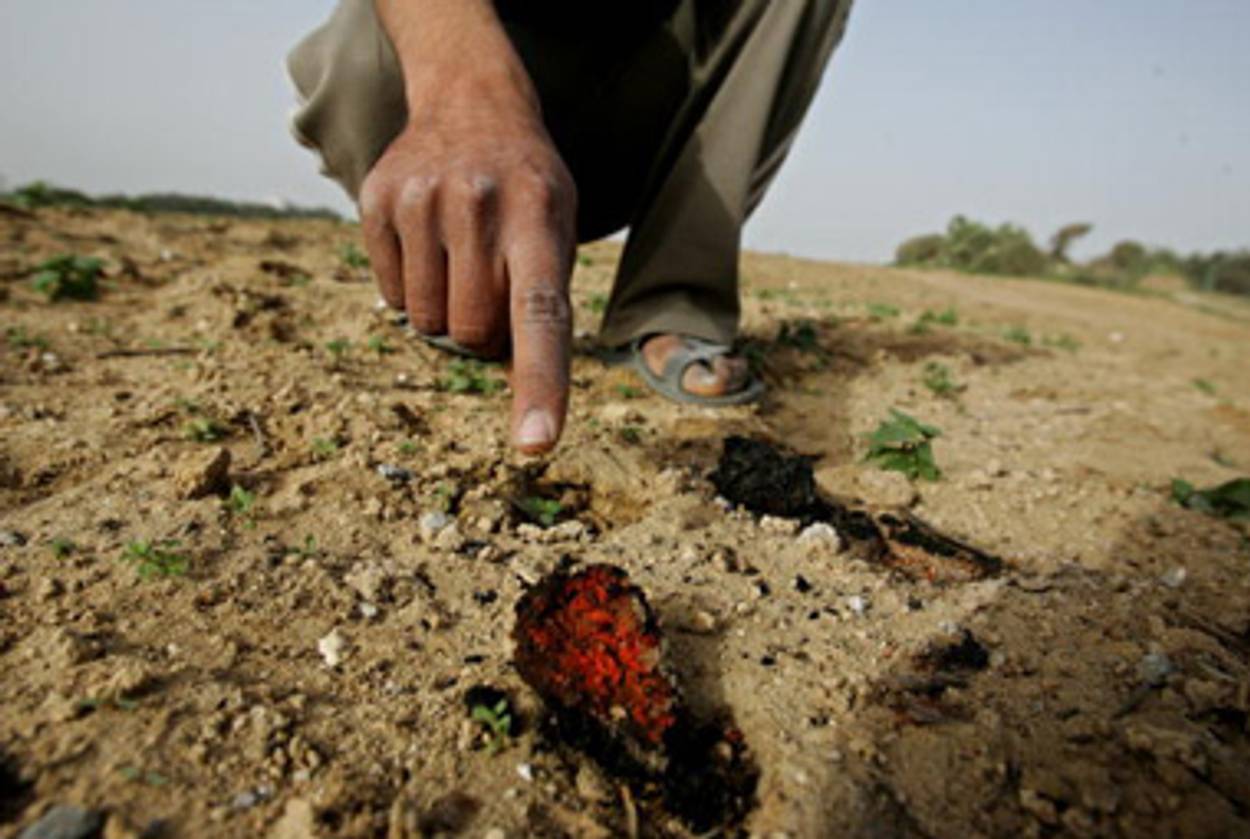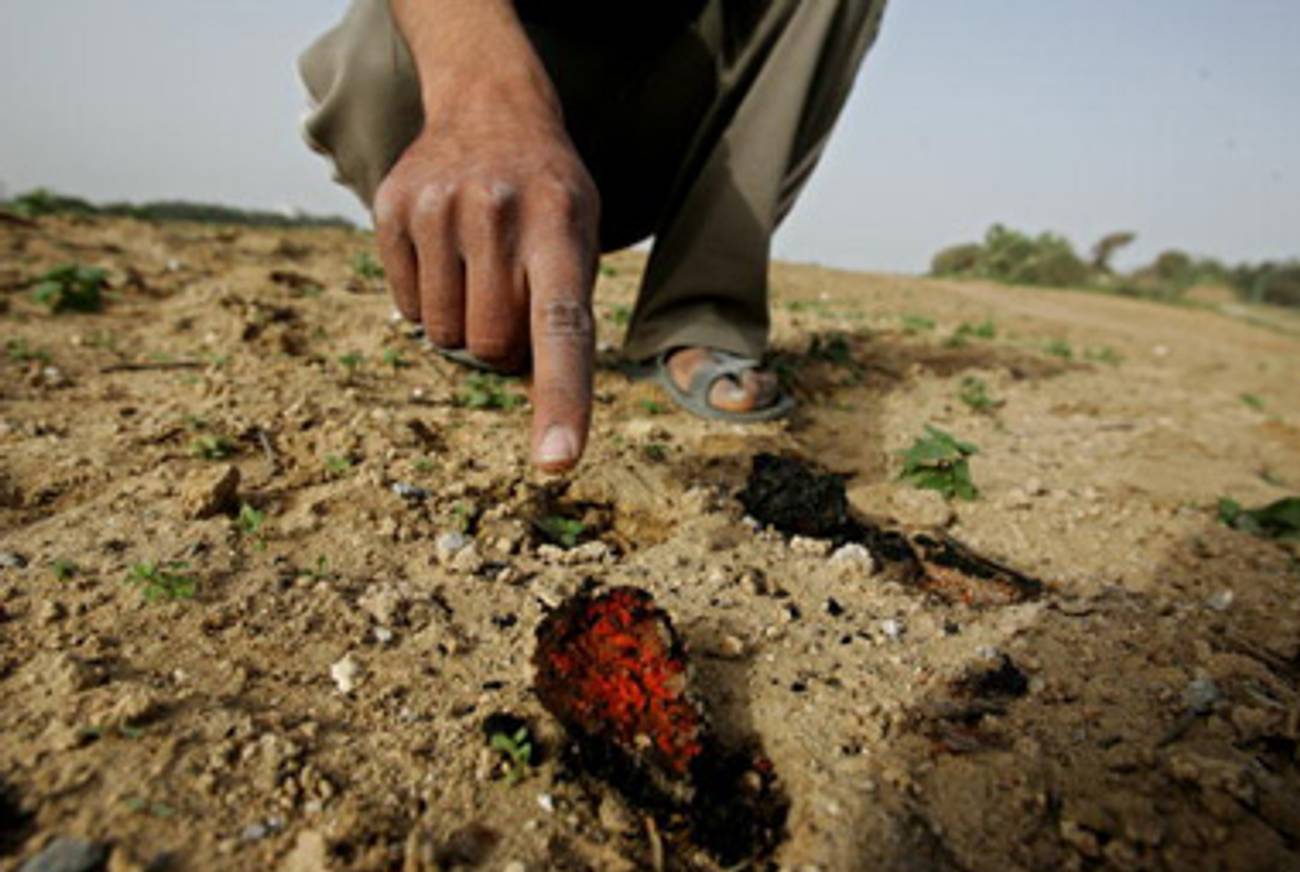Report Card
How the U.N. report on alleged Israeli war crimes in Gaza compares to the IDF‘s




Justice Richard Goldstone, the Jewish South African who was formerly chief prosecutor at the International Criminal Tribunal in The Hague, yesterday released his U.N. Human Rights Council report on last winter’s Gaza war. He found evidence of war cimes, and possible crimes against humanity, by both the Israel Defense Forces and Hamas. Unlike a previous U.N. inquiry commissioned by the secretary-general and released in May, the Goldstone team did not win the cooperation of the Israeli government, which also denied the four investigators visas on the grounds that the investigation was inherently biased against Israel. His research therefore relied heavily on an IDF report released in July for the Israeli perspective, and, in many cases, directly replies to, and contradicts, claims put forward by Israel. Here, the two reports’ conflicting takes on five controversial incidents:
SHELLING OF AL-MAQADMA MOSQUE, IN BEIT LAHIYA, JANUARY 3, 2009
In one of the starkest cases of contradiction, the IDF report claims that a strike on a mosque in Beit Lahiya, which was reported in January by news agencies and allegedly killed at least 10 people, never happened. “The IDF inquiry revealed that the mosque was not attacked at all,” the Israeli report said. “The individuals reported as killed in this incident were in fact killed in other incidents not involving the mosque.” The report adds that those killed were “in fact Hamas operatives killed while fighting the IDF.”
But Goldstone’s report says witnesses told U.N. investigators that a missile strike the night of January 3 blew the doors off the building, killing 15. Investigators reported seeing scorch marks on the ground. “The Mission concludes that the mosque was intentionally targeted by Israeli armed forces,” Goldstone writes. “The Mission’s finding is strengthened in the face of the unsatisfactory and demonstrably false position of the Israeli government.”
BOMBING OF AL-DAYA RESIDENCE, IN ZEITUN, JANUARY 6
Bombs dropped by IDF jets on January 6 intended for a weapons storage facility instead struck a home, killing 22. The IDF said in its report that its jets first fired warning shots at the roof of the house, but acknowledged that the standard warning phone call went to the building that actually contained the weapons, not to the home that was bombed. “Israel deeply regrets the tragic outcome,” the report said.
Goldstone’s report questions where the target building actually might have been, on the basis of witness statements that no buildings nearby were ever bombed during the the campaign. “The consequences may have been unintended; the act was deliberate,” the report says. “As such, the Mission considers Israel to be liable for the consequences of this wrongful act.”
SHELLING OF UNITED NATIONS RELIEF AND WORKS AGENCY SCHOOL, IN JABALIYA, JANUARY 6
John Ging, the head of the U.N. relief operation in Gaza, couldn’t have been any clearer when he accused the Israelis of wrongly targeting a U.N. school that was sheltering hundreds of innocent refugees; they’d “massacred” 40 people, he said. But three weeks later, Patrick Martin, a reporter for Canada’s Globe and Mail, managed to get into Gaza and reported that no one inside the school had been killed, though some were injured and at least 24 people in neighboring buildings died. Israel claimed it had been firing at enemy Hamas operatives, drawing fierce protests from U.N. officials, who insisted they were sheltering civilians. In its report, the IDF described the operation, which it claimed killed five Hamas operatives who were firing mortars at IDF forces, an “indisputable” success.
Goldstone, however, accuses the Israelis of using disproportionate force—four mortar shells—and 11 members of a family whose home was struck, among others, in order to eliminate the enemy threat. “Even if there were people firing mortars near [the school], the calculation of the military advantage had to be assessed bearing in mind the chances of success in killing the targets as against the risk of firing into a street full of civilians and very near a shelter with 1,368 civilians,” he wrote.
SHELLING OF UNITED NATIONS RELIEF AND WORKS AGENCY HEADQUARTERS, IN GAZA CITY, JANUARY 15
A week after the shelling near the U.N. school at Jabaliya, Israeli units hit U.N. Relief and Works Agency’s field headquarters in Gaza with white phosphorous shells, triggering a fire that engulfed the compound and destroyed a warehouse containing food and supplies destined for Palestinian refugee shelters. The IDF claimed it was only trying to create a smokescreen to block fire from Hamas anti-tank units.
The Goldstone report accuses the Israelis of being deliberately reckless—and of continuing to fire for two hours after U.N. officials had alerted their liaison in Tel Aviv that they were being hit.
SHELLING OF AL QUDS HOSPITAL, GAZA CITY, JANUARY 15
Israeli forces dropped three shells on the Al Quds Hospital, a Red Crescent facility, in the midst of heavy fighting in Tel Hawwa, an urban neighborhood of narrow alleys and close-built high-rises. The Associated Press reported at the time that 400 patients were trapped inside after the pharmacy building caught fire, likely from a white phosphorous shell that landed near a diesel tank.
The IDF said the shelling was prompted by Hamas’ use of medical facilities in Gaza City and elsewhere as cover for firing at IDF forces and, in one case reported by the Italian paper Corriere della Sera, for detaining members of Fatah and other opposition groups. Israel also complained of multiple cases of Hamas militants using ambulances as escape or transport vehicles, but the Al Quds incident remains officially under investigation.
Goldstone countered that tank commanders firing from as little as 400 meters away surely knew that they were hitting the hospital, rather than surrounding buildings. “In directly striking the hospital and the ambulance depot the Israeli armed forces in these circumstances violated Article 18 of the Fourth Geneva Convention,” Goldstone wrote.
Allison Hoffman is a senior editor at Tablet Magazine. Her Twitter feed is @allisont_dc.
Allison Hoffman is a senior editor at Tablet Magazine. Her Twitter feed is @allisont_dc.